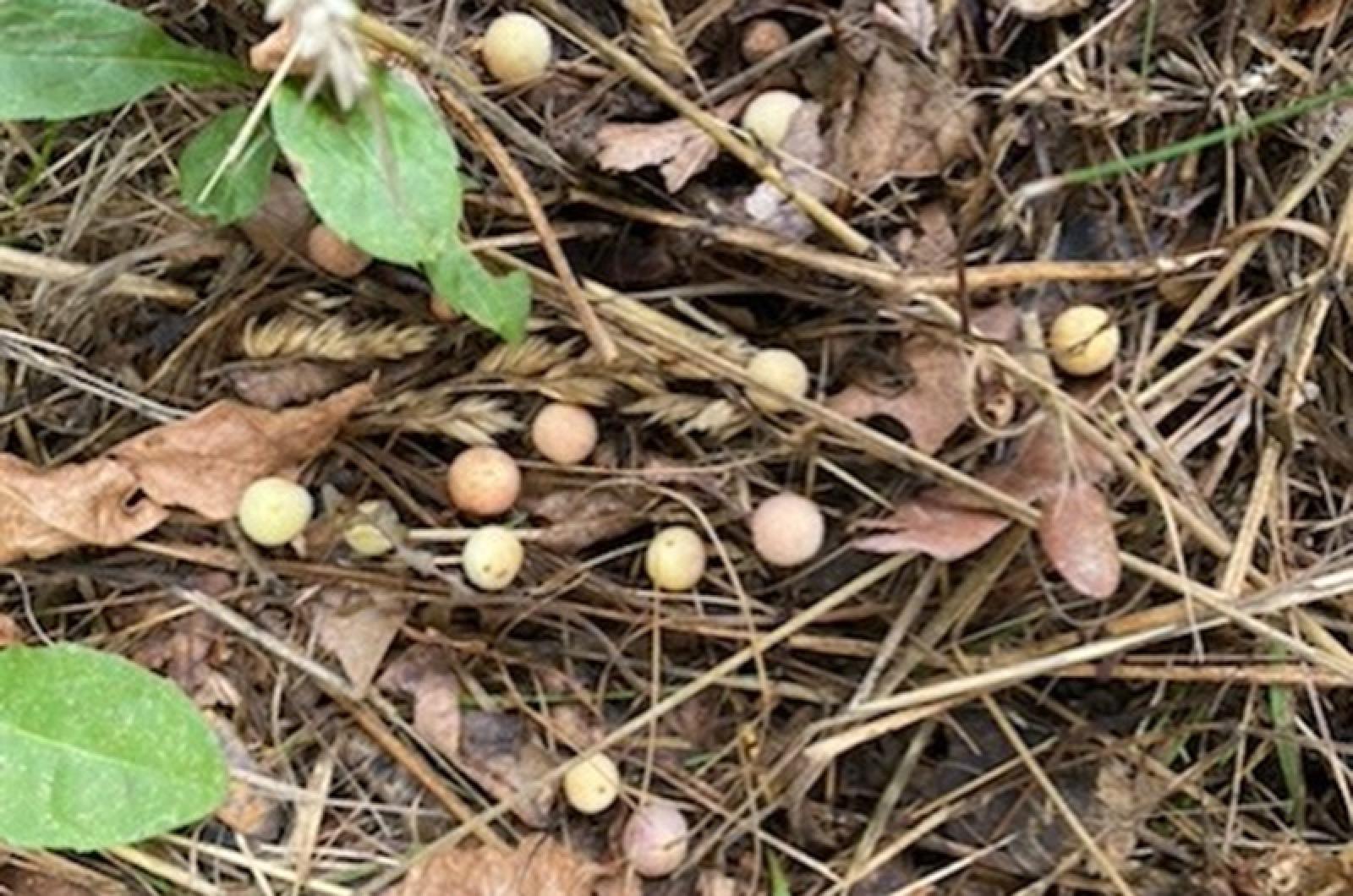Terre Young has a lot of galls.
While I’ve always had confidence in her strength and moxie when it comes to taking on a cause or project, she just might be outnumbered this time. Terre, or more specifically her trees, have a blight on their branches.
A few weeks ago, Terre brought me an envelope of small, round balls that were covering the ground below her white oak tree. “Could they be drought-damaged acorns,” she asked, “or can you help me figure it out, oh wise woman of nature?”
Flattery will get you everywhere so I took up the charge to solve the mystery of the bountiful balls. Definitely not acorns but rather galls, which are insect-induced swellings of vascular plants. These growths are caused when an insect injects an egg into a plant and the plant responds by swelling. That growth provides a nursery for the insect’s larvae that will hatch from the egg.
Galls are made by many insects and it wasn’t enough to leave it at that, so I scoured my books and the Internet, but couldn’t find a definitive species for the maker of this gall. A bit stuck, I reached out to some favorite experts.
Maybe it was oak gall itch mites, one opined, that can cause minor itching, similar to chiggers, if humans are exposed to them.
Some additional research had me doubting that identification since I was unable to find reports on these mites in Massachusetts or New England for that matter. Those pests originated in Europe, were detected in the midwest in 2004, and subsequently were found in Pennsylvania, Ohio, Maryland and Virginia.
No dice, yet, on discovering the generator of the galls.
The next knowledgeable naturalist hit a homerun with her identification. She suggested — and then confirmed with another entomologist — that these galls were oak wasp galls, produced by a cynipid wasp called philonix nigra.
Gall wasps, also known incorrectly as gallflies, are thin-waisted wasps with a penchant for oak trees. There are 1,300 species worldwide — and 800 of them are found in the United States — and at least seventy percent parasitize oaks. They can be found on all parts of oak trees, including the roots, leaves, buds, twigs and branches.
Generally, these wasps and their galls don’t harm the tree. However, damage can ensue if the outbreak is heavy and the location of the galls are in a vulnerable part of the tree’s anatomy.
Most gall wasps in this group can reproduce sexually and asexually, though this alternation of generations has not been documented in philonix nigra. Called cyclical parthenogenesis, only two are needed to tango every other year. In an off-year, one insect can reproduce without a partner.
Terre clearly got more than she bargained for in terms of both galls and this explanation. Finding the identity of those fuzzy orbs was a bit like finding a needle in a haystack — only this time it was cynipid in a sphere.
I will take the advice of one of my colleagues who suggested that I put the galls in a plastic bag and let them overwinter. It will be like Christmas for curious entomologists when the larvae metamorphose into an adult. My gift will be species confirmation on a bag of wily wasps.
Suzan Bellincampi is islands director for Felix Neck Wildlife Sanctuary in Edgartown and the Nantucket Wildlife Sanctuaries. She is also the author of Martha’s Vineyard: A Field Guide to Island Nature and The Nature of Martha’s Vineyard.







Comments
Comment policy »